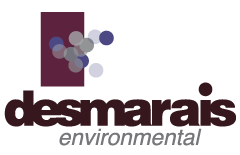Mercury/PCB
Mercury
Copy to come
PCB
Polychlorinated Biphenyls (PCBs) were used in the construction, renovation and repair of many buildings, including schools, from the 1950’s through the late 1970’s. PCBs may be present in products and materials produced before the 1979 PCB ban. PCB’s were used in industrial and commercial applications including electrical, heat transfer, and hydraulic equipment. They were also used as plasticizers in paints, plastics and rubber compounds; and in pigments in dyes and some papers. PCBs commonly found in building construction include exterior window and door caulking and expansion joints. Most commercial PCB mixtures are known in the United States by their industrial trade names; the most common name is Aroclor.
According the Environmental Protection Agency’s (EPA) current PCB regulations, caulking containing PCBs at levels greater than or equal to 50 parts per million (ppm) is not authorized for use and must be removed. PCBs in caulk are known to contaminate adjacent building materials (masonry, wood, concrete, etc.) and soil surrounding the building. Therefore, any surrounding building material that is contaminated by PCB caulking at levels greater than or equal to 50 ppm must be cleaned up, due to PCBs leaching into the material.




